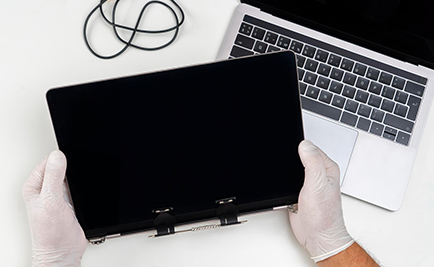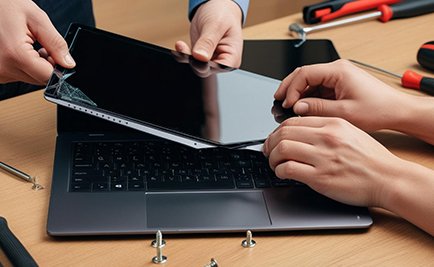When it comes to replacing the screen on your laptop or monitor, choosing a compatible screen is essential to ensure optimum performance. Here's everything you need to know about compatible screens and their importance.
What is a compatible screen?
A compatible screen is one whose technical and physical characteristics perfectly match the specifications of your original device. This includes
- Size: Dimensions in inches must be identical to those of the original screen.
- Resolution: The resolution (e.g. Full HD 1920x1080 or 4K 3840x2160) must match that of your original device.
- Connectors: Screen connectors (LVDS, eDP) must be identical for correct connection.
- Interchangeable part numbers: Some screen part numbers, even if they belong to different brands, may be compatible if they meet the same specifications.
How do you know if a screen is compatible with your device?
1) Check the exact model of your current screen:
Check the label on the back of the screen, or use the information in the system settings to find the exact reference.
2. Search for screens with identical specifications:
Use your screen model to search online. Manufacturers and specialized vendors usually specify whether the screen is compatible with a specific computer model.
3. Contact a professional:
If in doubt, consult an expert or contact the manufacturer's customer service department to confirm compatibility.
Advantages of choosing a compatible screen
- Easy installation: A compatible screen can be installed without any additional modifications.
- Optimal performance: With the right specifications, you benefit from optimum display quality.
- Reduced risk of failure: Using a non-compatible screen can lead to problems such as dead pixels or backlight malfunctions.
The risks of a non-compatible screen
- Display problems: Inappropriate resolutions or mismatched connectors can alter image quality.
- Physical incompatibility: A screen of a different size or thickness may not fit your device properly.
- Electrical malfunctions: Screens using incorrect connectors or voltages may damage your device.
Choosing a compatible screen is an essential step in ensuring the durability and performance of your device. Take the time to check the specifications, and if in doubt, call in an expert to avoid unpleasant surprises.

 ES
ES
 DE
DE
 FR
FR
 IT
IT





